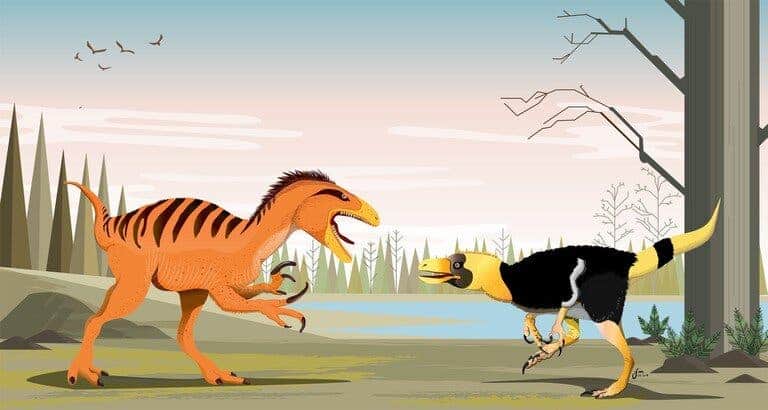Researchers from the University of Bonn and the Sirindhorn Museum in Thailand have identified two new cousins of T. rex.

The fossils of these two species were discovered in Thailand some 30 years ago, but hadn’t been studied until now. Both dinosaurs are relatively distant cousins of T. rex, the team reports, with a somewhat more primitive body structure. However, they were both effective predators.
The fossils were first unearthed three decades ago in Thailand and were subsequently passed over to the Sirindhorn Museum, where they were never examined in detail. Adun Samathi, a paleontologist currently doing his doctorate at the Steinmann Institute of Geology, Mineralogy, and Paleontology at the University of Bonn, re-discovered them in the museum’s archives around five years ago as part of his thesis efforts. He brought some casts of the fossils to the University of Bonn to analyze them together with his doctoral supervisor, Prof. Dr. Martin Sander, using state-of-the-art methods.
The results offer us fresh insight into the history of megaraptors. Tyrannosaurus rex is part of this lineage of carnivorous dinosaurs, whose name means “giant thieves”. There is some resemblance between the two new species and the iconic predator — they all, for example, ran on their hind legs and had a similar body structure. Unlike T. rex, however, the two new species had strong arms that ended in long, vicious-looking claws. Their heads were also more delicate and had long snouts.
“We were able to assign the bones to a novel megaraptor, which we baptized Phuwiangvenator yaemniyomi,” explains Samathi.
The Cthulu-like name was chosen in honor of where the fossils were discovered — the Phuwiang district, Thailand — and the discoverer of the first Thai dinosaur fossil, Sudham Yaemniyom.
Phuwiangvenator was likely a very adept runner, judging by its anatomy. But it was much smaller than T. rex, only growing about six meters in length (so about half the size). The discovery is pretty exciting if you’re into dinosaurs (and who isn’t?) because megaraptors, so far, had predominantly been discovered in South America and Australia. Phuwiangvenator’s body structure seems to indicate that the lineage actually originated in this area, from which it eventually spread far and wide.
“We have compared the Thai fossils with the finds there,” says Samathi. “Various characteristics of Phuwiangvenator indicate that it is an early representative of this group.”
“We take this as an indication that the megaraptors originated in Southeast Asia and then spread to other regions.”
The other set of fossils that Samathi uncovered during this doctoral research seem to belong to another as of yet unidentified species. Sadly, there wasn’t enough material to clearly determine its ancestry; however, the team believes it was also a predator related to Phuwiangvenator and T. rex. Christened Vayuraptor nongbualamphuenisis, this dinosaur seems to have been the runt of the litter — it measures around 4.5 meters in length. It’s not much information to work from, but the size alone is useful as it paints a richer tapestry of the ancient ecosystem that these dinos lived in and the roles they undertook.
“Perhaps the situation can be compared with that of African big cats,” explains Samathi. “If Phuwiangvenator were a lion, Vayuraptor would be a cheetah.”
The two new predatory dinosaurs will be presented to the public today to mark the tenth anniversary of the Sirindhorn Museum. The event will be opened by the Thai Princess Maha Chakri Sirindhorn.
The paper “Two new basal coelurosaurian theropod dinosaurs from the Early Cretaceous Sao Khua Formation of Thailand” has been published in the journal Acta Palaeontologica Polonica.


